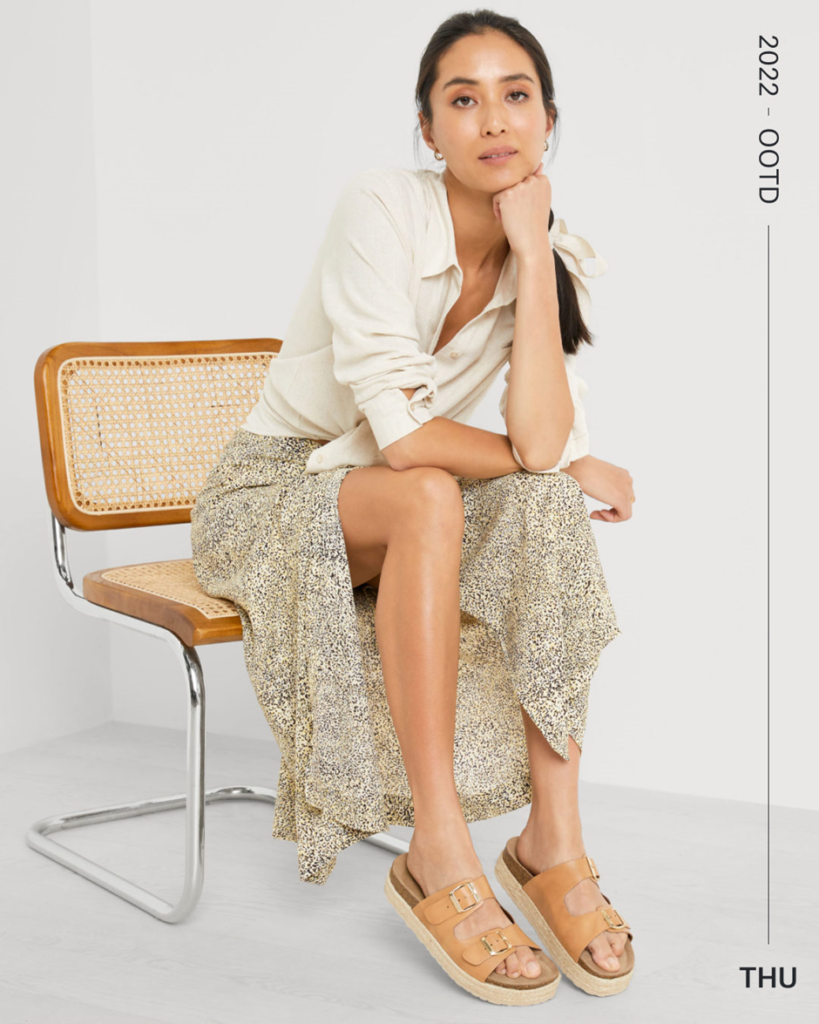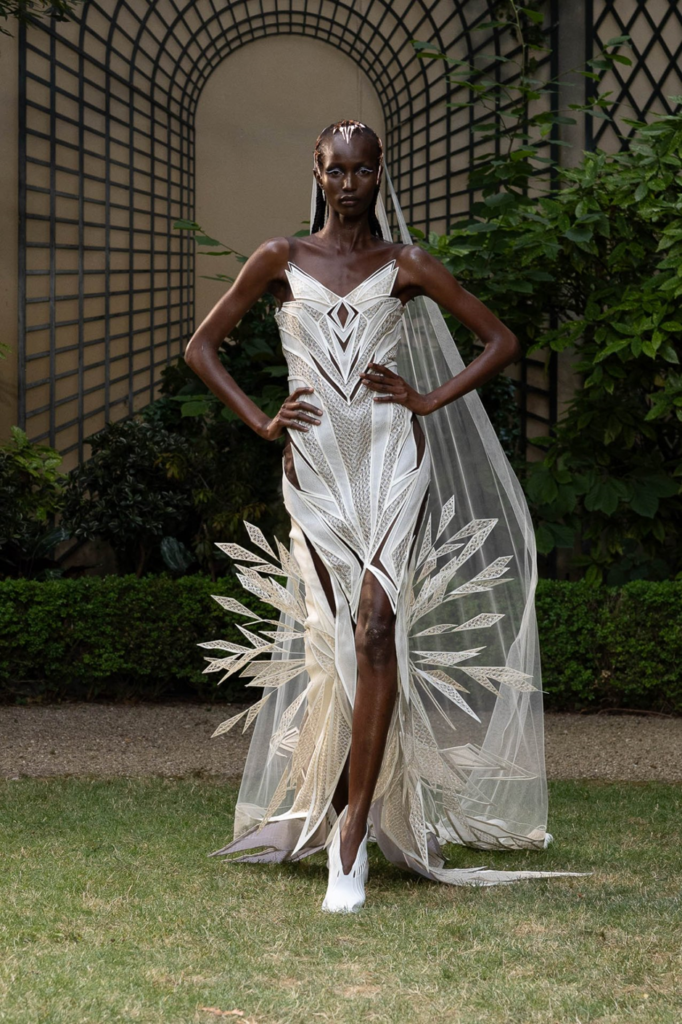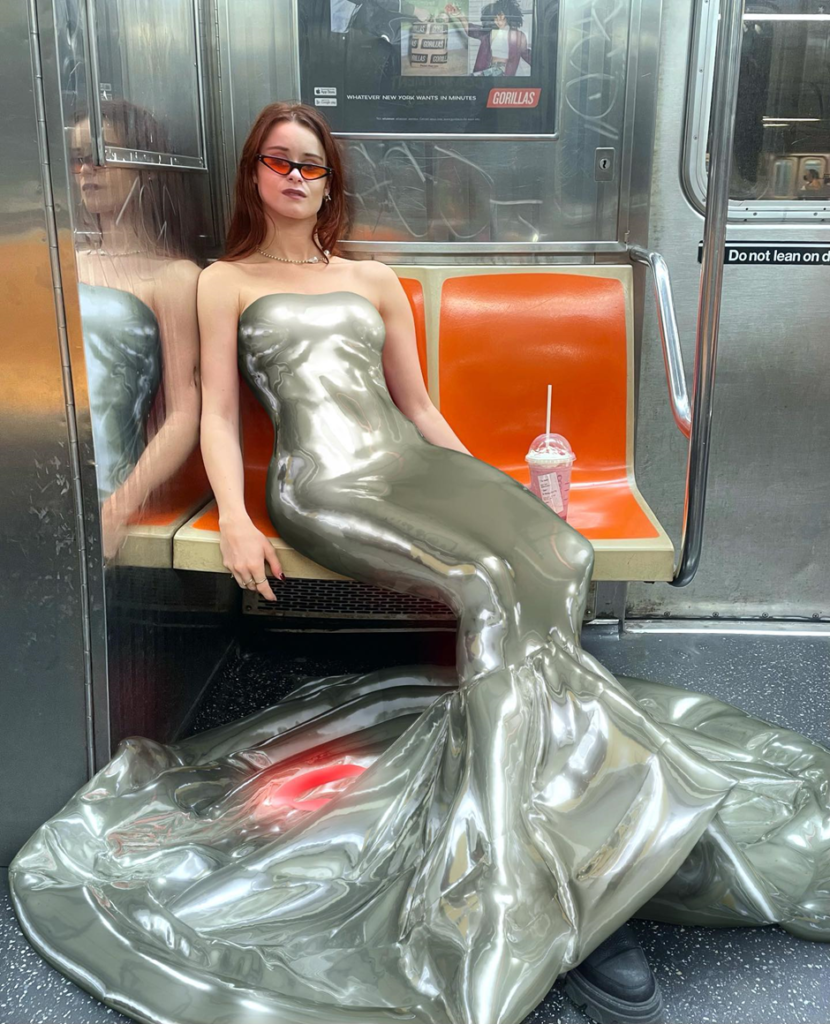Blog
TECH IN FASHION: TOP TECHNOLOGIES AND INNOVATION
IN THE FASHION INDUSTRY
ADOPTED BY FASHION BRANDS
IN THE FASHION INDUSTRY
ADOPTED BY FASHION BRANDS
By Lora O’Brien
Fashion is one of the biggest industries in the world, so much so that it’s estimated it will be worth a staggering 3.3 trillion by 2030. But before now, fashion has come at a cost to both the plant and the people. From cheap manual labour, unfair wages, pollution, not to mention the sheer volume of excess waste, it would be justified to suggest the fashion realm hasn’t always been what one would consider a ‘green’ industry. But that is slowly but surely changing as many focus on sustainable ways to cater to consumer needs, while focusing on ways to support and love the planet, too.
This intentional focus on sustainability has shined a spotlight on the fashion industry, with more designers finding innovative ways to create fashion, and one major shift is the use of new and exciting technologies.
From robots operating on factory floors, AI working as a personal shopping assistant to consumers shopping both online and in-store, to machines literally printing fashion accessories, these innovations below are transforming the world of fashion as we know it.
TECHNOLOGY TRENDS RESHAPING THE FASHION INDUSTRY
AI
Years ago, AI was used as a means of improving the shopping experience of customers by analyzing data to increase sales and predict trends. You’ll find some form is interactive touchscreen in most stores which is used to improve the customer experience. The technology behind AI uses algorithms, which track the journey a customer makes, making sure they’re matched with the right products.
Fast forward to today, and AI has become even more innovative, tailoring recommendations to give the customer a bespoke service. The algorithms search through stacks of data to present a size, fit, style preference, location, age, gender and more to the customer, acting like a personal assistant. They then work to provide style advice to suit the individual.
Amazon is set to open an AI fashion store where machine learning algorithms will provide customers with fashion recommendations in the real world. Stitch Fix is another personalized styling platform that will recommend items based on the user’s preferred style, adhering to their budget, too. It provides a ‘like’ or ‘dislike’ button to help the AI perfect what each customer likes in the future.
And AI is also doing its bit to reduce waste in the fashion industry. Slow fashion marketplace Mive uses a 3DLOOK body scanner to collect remote data which is then used to make made-to-order clothing, thus eliminating waste, and cutting down on emissions.

WEARABLE TECHNOLOGY
Our real life has been entangled with a virtual existence for some time now, whether we’re aware of it or not. Many designers in varying industries have been experimenting with the limits of what wearability means, and it’s quite innovative.
The Internet of Things, otherwise known as IoT, describes objects that ‘talk’ to each other. The devices can be anything from smartphones to wearables, and they’re connected to gain information which is then analyzed and used to give information that will aid the consumer.
Macy’s was one of the first stores to do so, and they used wireless devices called beacons that transmitted Bluetooth signals that then sent location-based promotions to customers via their app. Nike also used IoT with their sneaker range including a sensor that tracked the wearers’ running performance via either the iPhone App or their iPod.
Today, NADI X has created yoga pants built with sensors that work to correct the users’ posture by emitting a vibration as they practice yoga poses.
Hexoskin is a brand using IoT to help people take control of their health by tracking their heart rate and temperature. Their socks also work to count steps, calories and other data that fuse fashion, health and functionality.

3D PRINTING
3D printing is the process of printing clothing and accessories using a 3D printer. This reduces excess fabric waste from cut-offs as clothing can be made with a specific number of materials, without uncertainty over the quantity or volume of resources needed for each project.
The technology allows intricate digital designs to be printed via a machine, and though it’s a lengthy process that ultimately takes hours to create, it results in around a 35% reduction in waste, not to mention it’s less labor-intensive than other forms of manufacturing.
At this point, 3D printing is used in fashion mainly in show pieces and runways. Fashion designer Asher Levine has used 3D printing to create one-off pieces for celebrities, such as Lady Gaga. However, many sustainable brands are hoping to adopt more 3D-printed garments to the masses.

VIRTUAL INFLUENCERS
Much like the evolution of fashion, the influencer industry is evolving, too. Brands are now hiring virtual influencers that have been generated using a computer, to mimic human influencers across social media platforms.
Virtual stars such as Lil Miquela have amassed large follower accounts and have many brands eager to work alongside them to advertise their products, as is the job role of an influencer.
But they’re not stopping there. Many brands are also creating their very own virtual influencers to advertise their products, and it’s happening in high street brands such as Marks and Spencer and Pretty Little Thing, to luxury brands such as Prada.

VIRTUAL FASHION
Love or loathe the Metaverse, it’s not going anywhere and is even having a profound impact on the world of fashion, such as Meta’s virtual fashion runway. Now fashion brands are taking things one step further and designing clothing solely for the Meta world, creating innovation in the fashion industry.
The virtual clothing is available across Meta platforms, such as Facebook, Instagram, Messenger and Meta virtual reality experiences. Luxury brands such as Gucci, Burberry and Valentino are creating virtual outfits that can be purchased to dress avatars.
But virtual fashion is not only used for dressing avatars. Digital fashion is also being sold to render onto real people, creating the illusion of wearing these outfits, as shown on the Instagram page @thisoutfitdoesnotexist. Though it may seem odd at first, there are many arguments made to buying clothing that has been digitally designed, such as the fact it’s cheaper, fit to size and is ethically made without the use of sweat shops or unethical manufacturing.

MAGIC CHANGING ROOMS
It’s not just our fashion that is changing, but the way we shop is also morphing, too. I think every woman can attest to how much they despise the shopping experience. From sifting through clothes to find your size, and having to wait in line to try them on, before joining another queue to check out and pay. Not to mention the unflattering lighting of changing rooms is enough to make anyone shudder.
Brands such as Reformation are bringing a technological approach to their shops, much like their flagship store in London which offers customers a ‘magic wardrobe’ shopping experience. The concept is that one of each item is available on the shop floor, with touchscreen monitors throughout the store which customers can use to pick their style, size and color. These items are stocked by staff behind the scenes and waiting in the dressing room once the customer is ready to try them on.
Need a new size? Not sure of the style? Just tap the iPad screen in the changing room and a new garment will appear. And if you’re not keen on the lighting, you can customize it to choose one that makes you look and feel your best while trying the clothing on.

AUGMENTED REALITY
Augmented reality is of huge interest to many fashion brands, allowing people to interact with digital objects over the world in real-time. The technology itself can be used to create exciting, engaging experiences, which heightens the shopping experience for consumers.
One example was during New York Fashion Week when designer Maisie Wilen used holograms to display her latest designs. It was an immersive experience for those at home who could view the collections in full 360 degrees via their smartphones.
Arguably, one of the most anticipated uses of AR in the fashion world is the ability to virtually try on clothing. High street brand GAP has recently launched their app which enables customers to visualize digital garments on their body before buying.
Taking things to another level is 3DLOOK’s YourFit. The user uploads two photos of themselves and, using body scanning technology, they’re then taken to a virtual fitting room where they’re able to visualize how various products will look on their body.

FINAL THOUGHTS
Many designers are taking full advantage of the move to fuse fashion and technology and it does make sense considering we’re living in a modern world that is hyper-focused on tech. Pushing the limits, we’re able to revolutionize these advancements in technology within fashion, and it may just be making the fashion industry greener, too.
In Remeant we developed a revolutionary patented technology that enables to recycled of different kinds of non-recycled and unconventional single-use plastics, eliminates them from the waste stream and turns them into colorful amazing textiles. click here to read more about our textiles.
